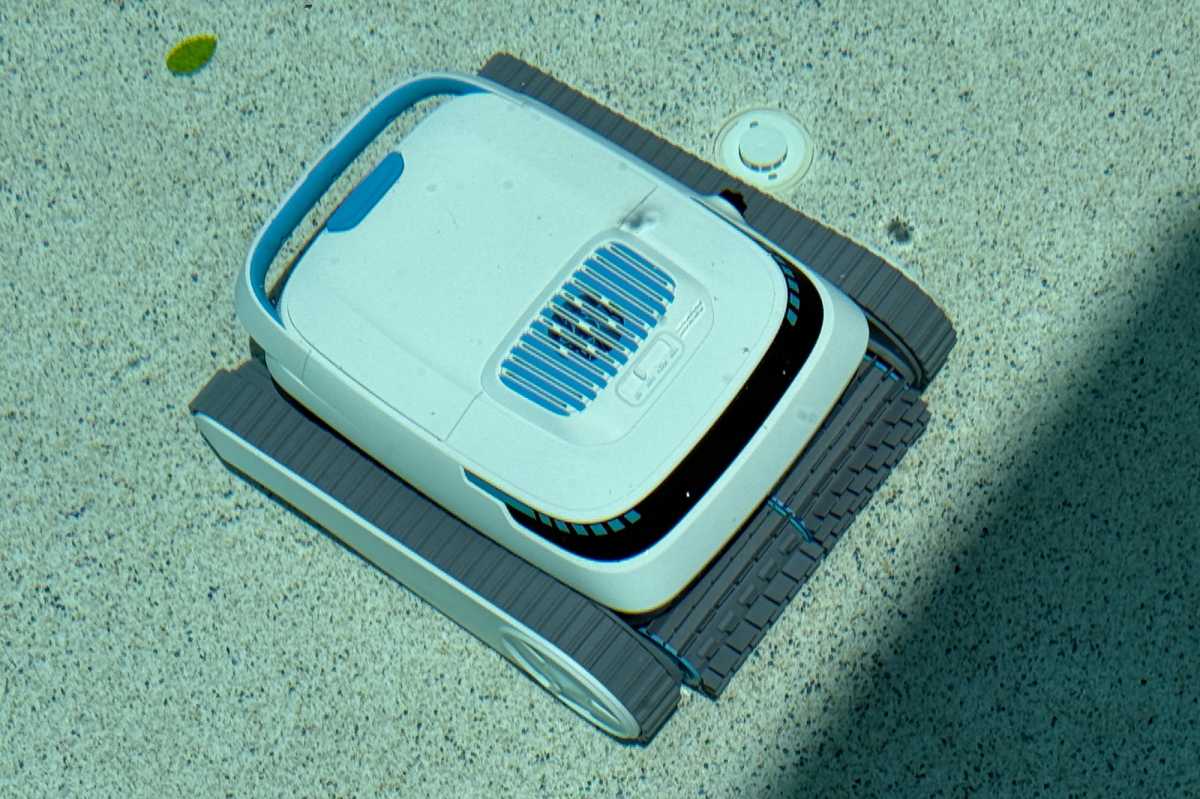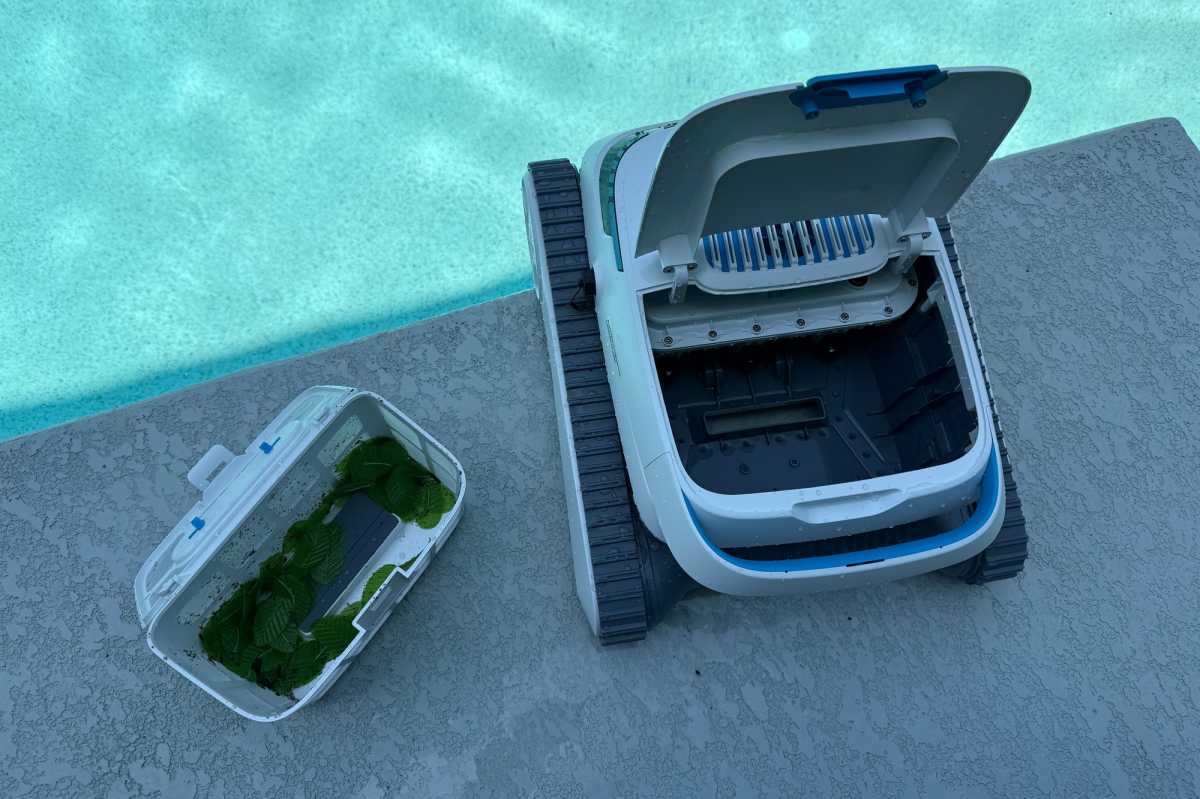Expert's Rating
Pros
- Extremely affordable for its size class
- Very simple to use
- Reasonably easy to clean
Cons
- Short operating cycle due to its limited battery life
- Misses a fair amount of debris
- Zero smart features
Our Verdict
This robotic pool cleaner has no smart features and offers slightly limited performance; but you might not find anything as capable at this very low price.
Price When Reviewed
This value will show the geolocated pricing text for product undefined
Best Pricing Today
Sometimes there’s a place for simplicity in and around the home, and pool owners who only need the absolute basics might want to give the affordably priced Airrobo PC10 a look for handling their pool-cleaning duties. Airrobo manufactures robot vacuum cleaners primarily; the PC10 and the similarly priced PC200 Lite are its only forays into pool-cleaning tech.
Specifications
This robotic pool cleaner certainly looks the part, weighing in at 22 pounds and featuring the tread-based design and central, scrubbing rollers that are typical of higher-end cleaners. Powered by a modest 5200mAh battery, the PC10 offers two hours of running time and a specified maximum coverage area of 1,076 square feet–roughly double the surface area of my pool’s floor (not including its walls). The unit charges via a burly connector on the side of the robot; a screw-on cap keeps water out while it’s at work.

The Airrobo PC10’s tread design mimics the look of higher-end, higher-priced robotic pool cleaners, although this machine doesn’t perform at their level.
Christopher Null/Foundry
There’s no mobile app and no remote control here; in fact, the only control on the entire device is a switch on the top of the robot that allows you to choose between three operating modes: floor only, wall/waterline, or both. This switch is more convenient than the typical selector buttons on competing devices, in part because it makes it easy to remember to turn the robot off after a run, even if its battery is dead.
The Airrobo PC10 is far cheaper than the other midrange robots with which competes.
Too many times I’ve forgotten to turn off a robot, only for it to attempt to come back to life after it’s been plugged in and charged for a bit. A large LED bar near the switch provides a color-coded indication of either battery level or a fault condition, but that’s it.
Performance
The Airrobo PC10 is dutiful in the water, pathfinding with reasonable efficacy, though it’s not always 100-percent effective at actually suctioning up debris. In observing the robot on its rounds, I found it often rolled over leaves without successfully picking them up—and sometimes created a current that pushed those leaves up and over the robot as it approached.

Christopher Null/Foundry
It’s perhaps a strange quirk of the unit’s aquadynamics, and the primary reason why the Airrobo was only about 85-percent effective—at most—collecting both organic and synthetic debris in my testing. As with most robotic pool cleaners, the Airrobo was unable to clean steps, and it struggled with tight corners, although it never got stuck anywhere. Wall/waterline cleaning performance was about average in my testing.
The unit is designed to park itself near a wall upon completion of its two-hour cycle, which it did successfully in my testing, after which it must be retrieved with the included hook and a pole. Debris is captured in a mid-sized, tight-meshed filter basket, which is accessed through a hatch on top of the robot. The basket is a simple unit with a single, hinged lid. Cleaning it out with a hose is not the easiest because debris can’t pass through, but the size of the basket is small enough to make the process fairly uneventful.

The Airrobo PC10’s The filter basket fits beneath a top-mounted hatch. You’ll use a hose to clean it out.
Christopher Null/Foundry
This review is part of TechHive’s in-depth coverage of the best robotic pool cleaners.
The Airrobo PC10 is available in two colors, both two-toned in white and either gray or blue. Both were priced at $360 at the time of this review, a steep discount over the perhaps over-ambitious $800 MSRP and far cheaper than other midrange robots with which Airrobo competes, such as the Wybot S2. At the same time, it’s a more effective device than the entry-level Aiper Seagull SE and similar robots, which are designed for very small pools that don’t get overly dirty. Other robotic pool cleaners in this class typicall don’t scrub walls, either. You can read more about Airrobo’s other pool-cleaning bot, PC200Lite, if you’re curious.
Should you buy the Airrobo PC10?
The Airrobo PC10 is a bit underpowered for my pool, though perhaps with a larger battery and a revamped suction system, it could be a contender down the line. For now, it’s best directed at users who want to upgrade from even smaller units without spending significantly more.
Войдите, чтобы добавить комментарий
Другие сообщения в этой группе

Intel is almost literally betting its future on its upcoming “Panther

If your PC won’t open Google Chrome, there may be a culprit: Microsof

Microsoft is adding a long overdue function to Windows 11’s popular S

Let’s say, as a thought experiment, that you’re a malware developer.

I appreciate that “budget” means different things to different people

I don’t use a Windows Copilot+ PC as a daily driver, though I have se

It’s hot out, and there’s a vacation vibe all around, so we’re aiming
